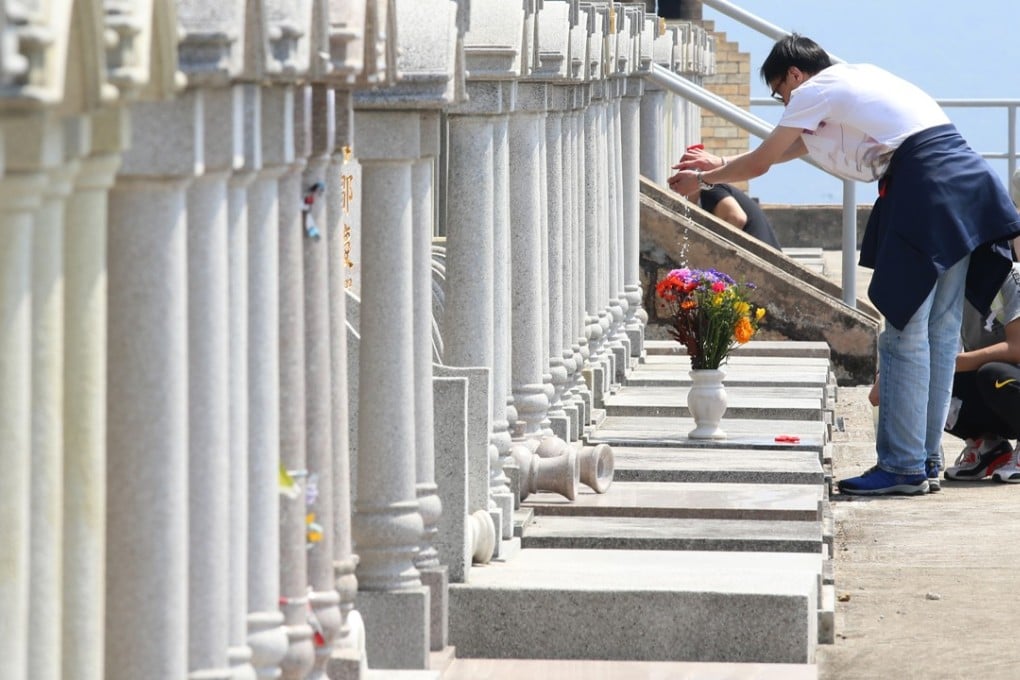Why dying in Hong Kong is getting more complicated ... and expensive
People find it increasingly difficult to secure a burial space or funeral niche for a loved one in a land-starved city which now offers burial at sea or in gardens of remembrance

Hong Kong is becoming a city where dying is an increasingly expensive affair.
In the city, where land is scarce, there is a growing shortage of public spaces for placing urns holding cremated people’s ashes, let alone burial plots.
More than 90 per cent of the city’s deceased were cremated in 2013, but the city is still struggling to find spots for them in public columbariums.
In Chinese culture, it is important for a deceased family member to be buried close to his or her native place, so he or she can watch over descendants and they in turn can visit the grave or permanent resting place regularly to pay their respects.
Families can either bury a relative in a public cemetery or columbarium, or pay a bigger fee for a private one.